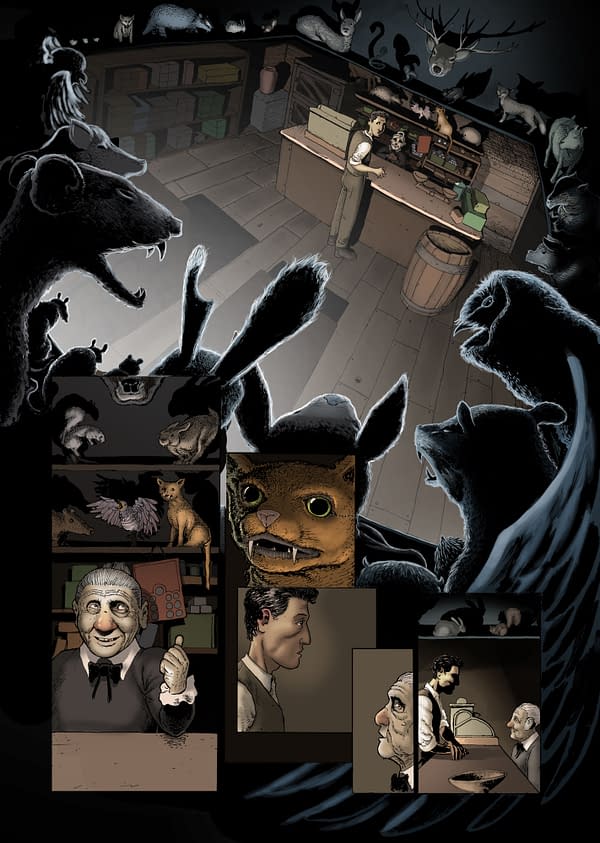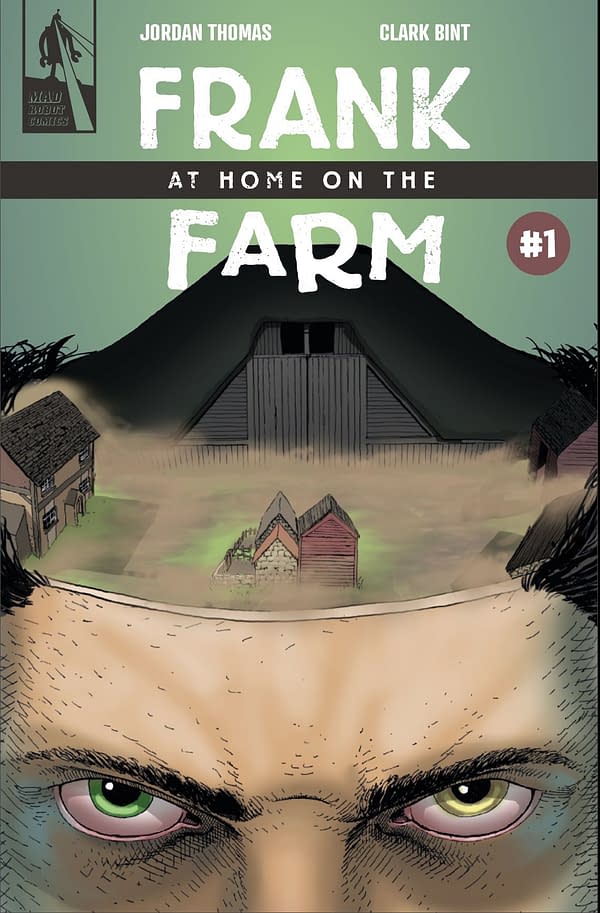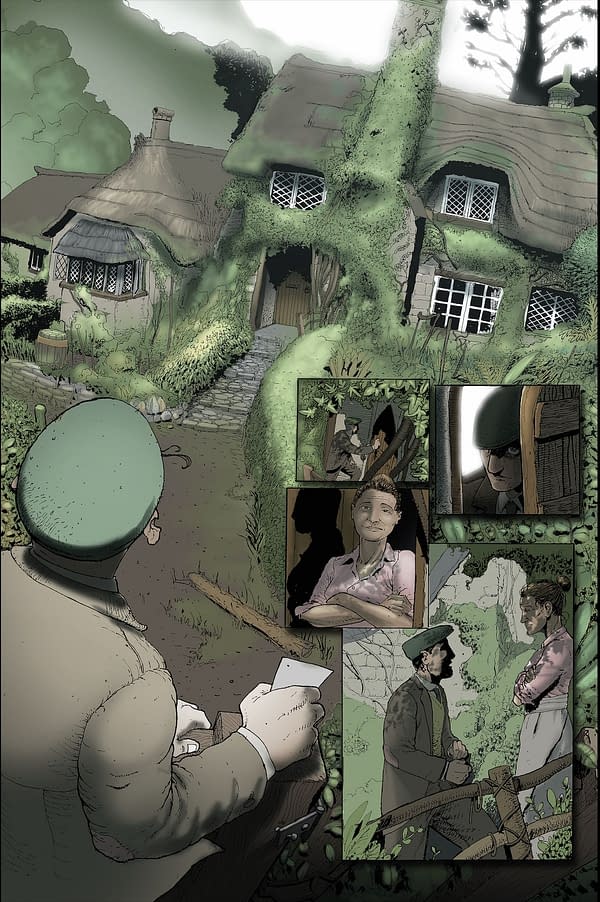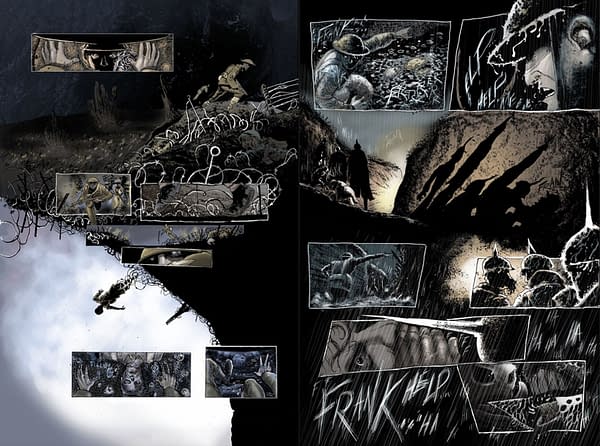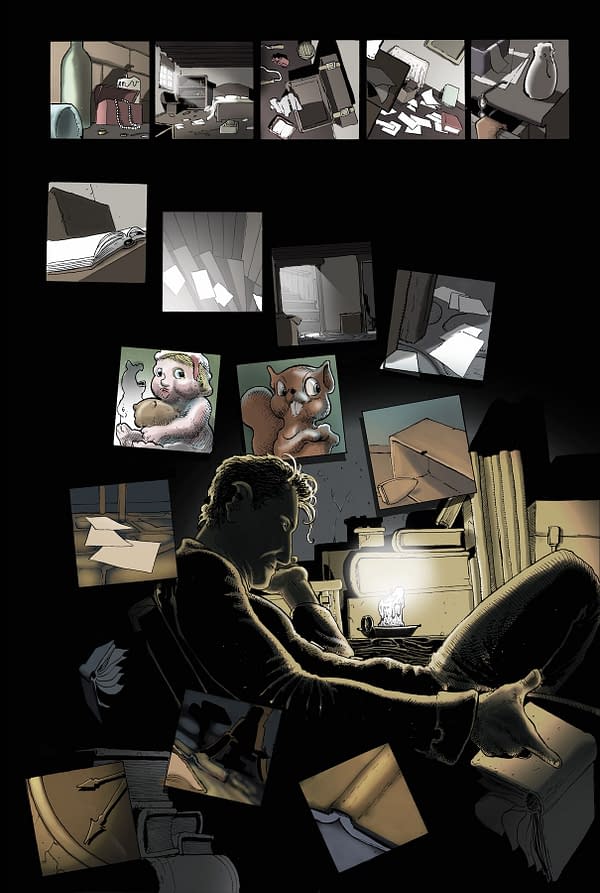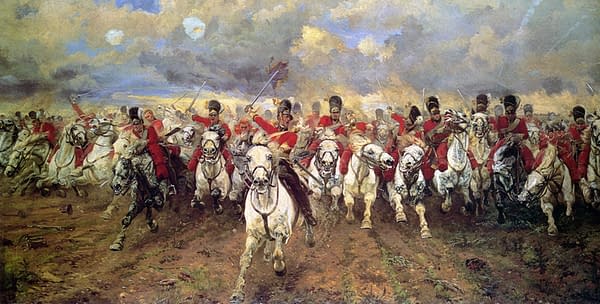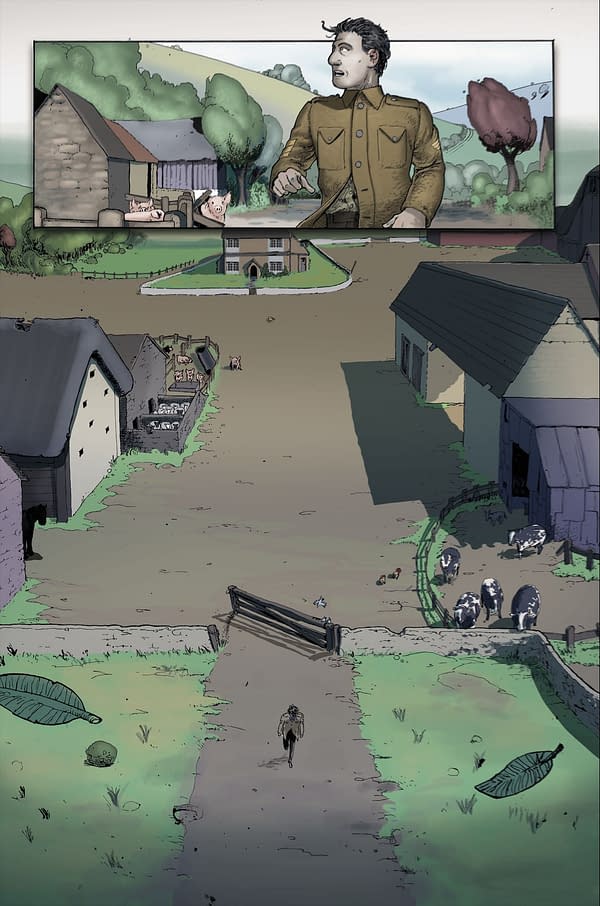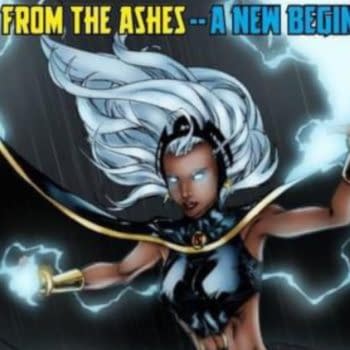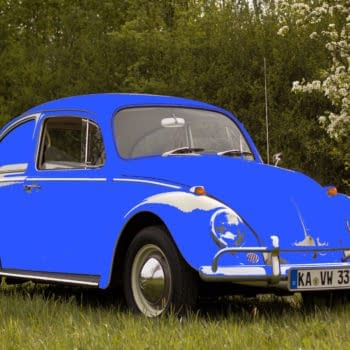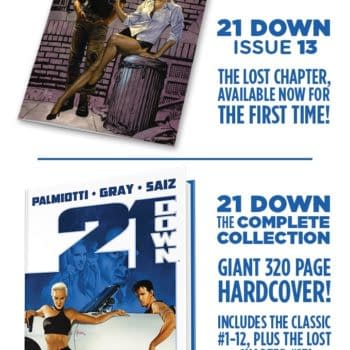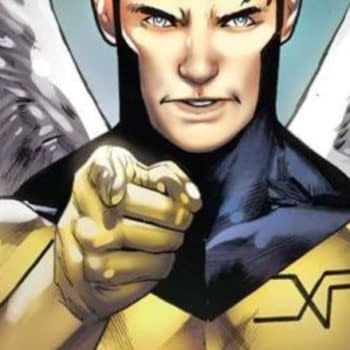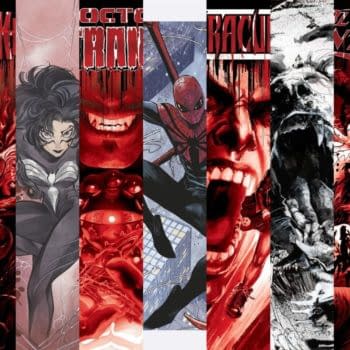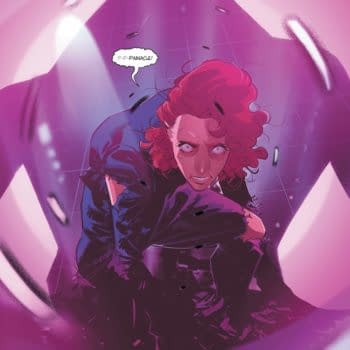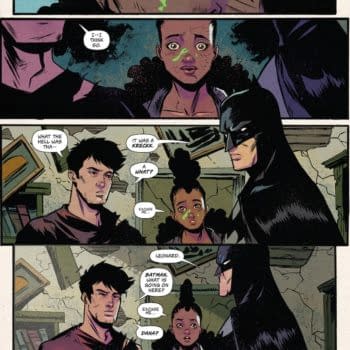Posted in: Comics | Tagged:
A Frankly Terrifying Artistic Endeavour
Clark Bint writes,
Ever been in the countryside at night? No cars, no lights. Drinking and talking under the stars in near-pitch black for hours. Then suddenly, next to you on the dirt road, you spot a black silhouette of something that wasn't there earlier. Then it barks at you. After you've run from the farmer's dog back home and changed your soiled underwear – you start to realise that the countryside is a special place for a horror scenario.
When I first read Jordan Thomas' script for Frank At Home On The Farm, one of the first things I picked up on was the isolation that Frank experiences. The first few pages tell us that his family aren't around, and his farm is clearly miles away from anywhere. This provides a great set up that – as the artist on Mad Robot Comics new book – I've loved exploring, especially knowing where it all leads to.
For teenage farm boys who grew up around nothing more than traction engines and hunting rifles, lying about their age to get onto the 4 year industrialised battlefield, was probably the worst decision of their lives. It's safe to say without even reading our book, like many WW1 soldiers, Frank has seen his fair share of horror. And unfortunately, he's found himself isolated with a lot on his mind. Even so, there's a strong sense of community within this time period, where everyone knows who you are, you know everyone, and you can leave your front door unlocked when you're out.
But if Frank, as a lonely, frustrated man searching for answers, was isolated and had access to a modern day internet – well, he might just find himself at a virtual crossroads. Maybe a series of Reddit pages: R/TheyAreTheProblem and R/IamTheProblem (these are obviously fictional pages, I know). After all, our book may well be a period piece, but the most memorable horrors are the ones that reflect our times. It could be the 1970's home-invasion horror of Halloween, or Millennial anxieties towards sex and death of It Follows. Something about Frank's inner and outer conflicts are leaking out into the world – and literally shaking up the page. The question is: who – or what – is going to provide Frank with a pressure valve? And more importantly, how do you visualise this sequentially?
This is where I come in!
I love the contrast of horror in an idyllic setting, so I like to keep my art as organic as possible. Sure, I'll use a ruler to nail that multiple-point perspective and building plans, but I'll ink it freehand, using dip ink pens for extra looseness. It helps me a temporary feeling to the subject, one that suggests that this thing I'm drawing will eventually need fixing over time, or will change it's location or attitude given a change in circumstance. The fluidity of movement and emotion within form is more important to me than perfect lines – but that means nothing without basic artistic knowledge of anatomy, perspective and the importance of patience and practice, as any artist will tell you.
After my initial research, there's something about those first couple of decades of the 20th century that is a little bit eerie to me. It's like there was an awkward transition between machinery, from steam engines to petrol/fuelled cars. I like to read up on the successes and horrific failures of technology in this era – people dared to realise airships as a reliable-enough machine to transport people, then they discovered just how big they would have to be, and how easy it is to die when they pop or explode a thousand feet in the air. Now we have no more airships. That kind of transition is apparent in the attitudes towards WW1 in art and literature. You can romanticise soldiers on horseback on the battlefield rather well – see Elizabeth Thompson's SCOTLAND FOREVER for a great example of a pre-WW1 painting of courage. It's a little harder to do the same with a Little Willie.
That's a Tank.
Panel layout is also very important to my approach on any book. Like literature or theatre, they rely on the imagination of the reader to complete the experience of the story. An artist creates space between the panels, and it's the reader that creates movement within that space. It's why timing is so important, yet sometimes overlooked in favour of the cool panels. A punchline is nothing without setup. With the more standard panels of the village scenes, I try to convey a sense of order and tranquillity within their community. I'm lucky to live in the beautiful Cotswolds, where first-hand visual research is only a drive away. Surrounded by trees and open land, a subtle, cleaner layout suits it perfectly.
Frank's panel structure is more chaotic, distracted and layered. His isolated nature disrupts this secure environment, giving way to a more creative layout. So I try and use that to add layers to the character in the same way that music or sound effects can in film or theatre.
Comics can be an orchestra, I say, and I can be a pretentious git.


